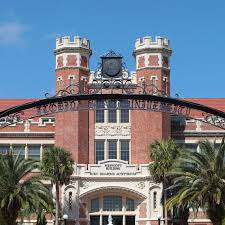Speaker
Description
I’ll discuss the role of the triangle anomaly in polarized deep inelastic scattering (DIS) employing a worldline formalism, which is a powerful framework for the computation of perturbative multi-leg Feynman diagrams. I’ll demonstrate that structure function $g_1(x_B,Q^2)$ measured in polarized DIS is dominated by the triangle anomaly in both Bjorken ($Q^2\rightarrow \infty)$ and Regge ($x_B\rightarrow 0$) asymptotics. I’ll show that the infrared pole of the anomaly appears in both limits. The cancellation of this pole involves a subtle interplay of perturbative and nonperturbative physics that is deeply related to the $U_A(1)$ problem in QCD. In particular I will discuss the fundamental role played in this cancellation by a Wess-Zumino-Witten term that couples the topological charge density to a massless isosinglet pseudoscalar field. I’ll demonstrate the fundamental role played by this contribution both in topological mass generation of the $\eta^\prime$ and in the cancellation of the infrared pole arising from the triangle anomaly in the proton's helicity $\Sigma(Q^2)$. I will introduce an axion-like effective action for the $g_1$ structure function at small $x_B$ that follows from the cancellation of the infrared pole in the matrix element of the anomaly, which describes the interplay between gluon saturation and the topology of the QCD vacuum. Such topological transitions can be measured in polarized DIS at a future Electron-Ion Collider.
| speaker affiliation | The Ohio State University |
|---|

